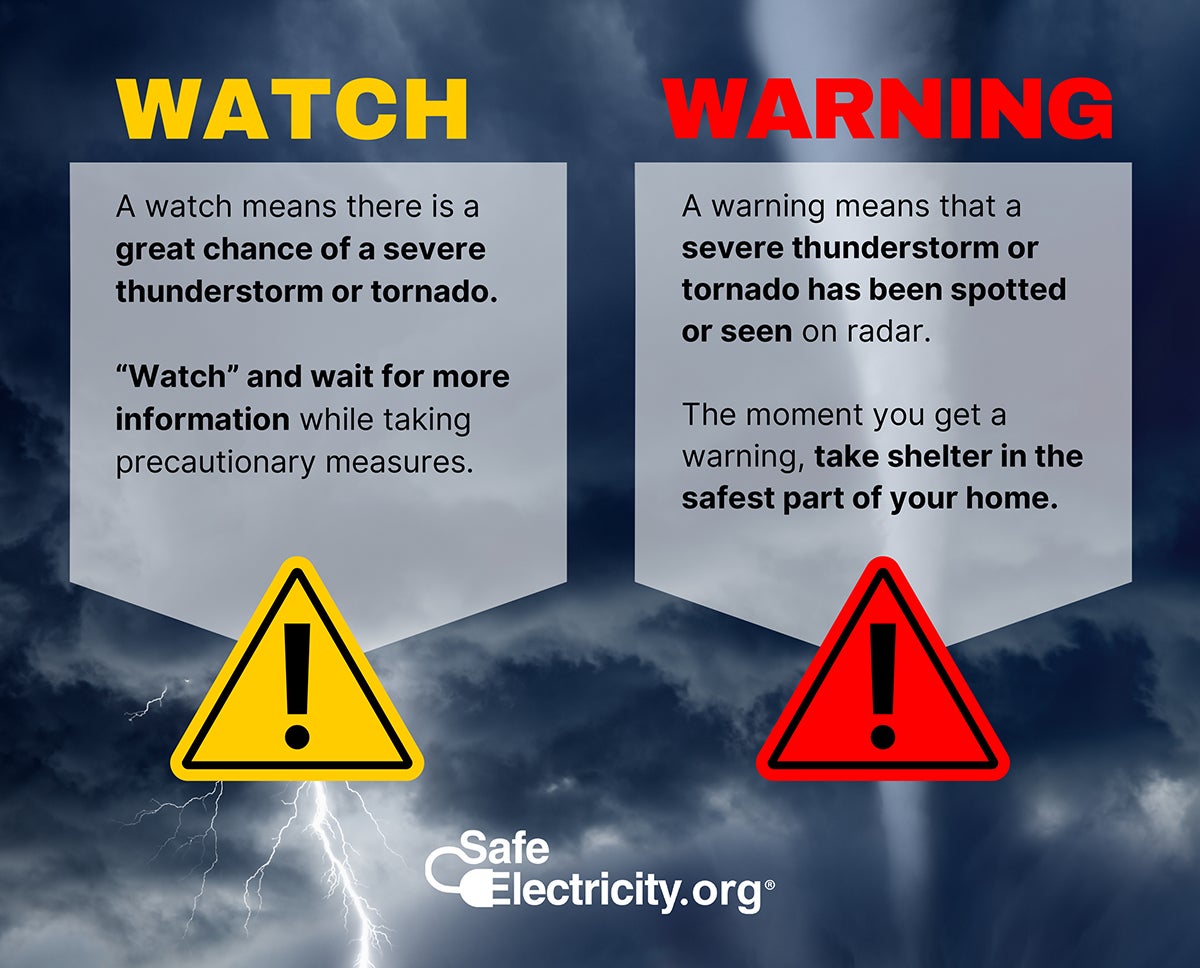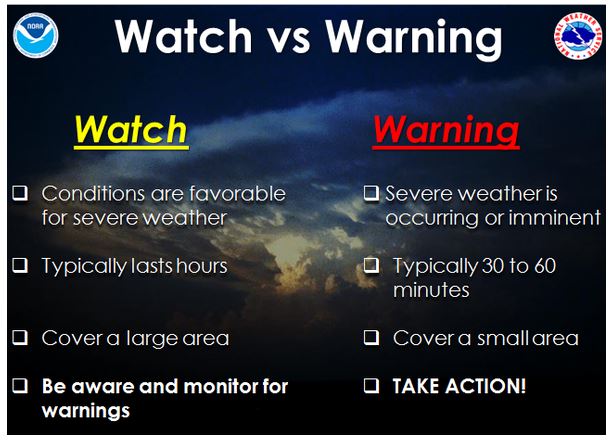watch versus warning
Associated Articles: watch versus warning
Introduction
On this auspicious event, we’re delighted to delve into the intriguing subject associated to observe versus warning. Let’s weave attention-grabbing data and supply contemporary views to the readers.
Desk of Content material
Watch vs. Warning: Navigating the Nuances of Pressing Communication

In a world saturated with data, the flexibility to discern urgency and reply appropriately is paramount. That is significantly true when coping with warnings and watches issued by authorities relating to impending hazardous occasions. Whereas each signify potential hazard, the essential distinction between a watch and a warning lies within the immediacy and certainty of the risk. Understanding this distinction isn’t merely a matter of semantics; it is a life-saving ability. This text delves into the precise meanings of watches and warnings, exploring the contexts wherein they’re used, the actions people ought to absorb response, and the broader implications of efficient communication throughout emergencies.
Understanding the Terminology: Watches and Warnings
The phrases "watch" and "warning" are mostly related to meteorological occasions like hurricanes, tornadoes, and extreme thunderstorms, however the ideas apply throughout a spread of hazards, together with wildfires, floods, and even public well being crises. Typically talking:
-
Watch: A watch signifies that circumstances are favorable for the event of a hazardous occasion. It is a heads-up, an alert that the potential for hazard exists. The risk isn’t imminent, however the risk is actual and warrants preparation. Consider it as a "be prepared" sign. Authorities difficulty watches to provide folks enough time to arrange and monitor the scenario. The particular timeframe for a watch can differ relying on the character of the hazard and the forecast. It would final for hours and even days.
-
Warning: A warning signifies {that a} hazardous occasion is going on now, or will occur very quickly. This can be a name to motion, a sign that rapid motion is important to guard life and property. The risk is imminent and poses a major hazard. A warning signifies a better stage of certainty than a watch, indicating that the hazardous occasion is both occurring or is about to happen within the specified space. The timeframe for a warning is usually shorter than a watch, typically indicating the occasion’s length and anticipated affect.
Examples in Completely different Contexts:
Let’s illustrate the distinction with concrete examples:
-
Extreme Climate: A twister watch signifies that circumstances are proper for tornadoes to develop. Folks ought to monitor climate experiences, evaluation their emergency plans, and be ready to hunt shelter if a warning is issued. A twister warning, then again, signifies that a twister has been sighted or indicated by radar, and rapid motion is required. Folks ought to search shelter instantly in a sturdy constructing or underground location.
-
Hurricanes: A hurricane watch signifies that hurricane circumstances are potential inside the specified space inside 48 hours. This gives time for residents to arrange their houses, collect emergency provides, and take into account evacuation if obligatory. A hurricane warning signifies that hurricane circumstances are anticipated inside 36 hours. This can be a clear sign to finish preparations, presumably evacuate, and take all obligatory precautions to guard life and property.
-
Wildfires: A wildfire watch may be issued when circumstances like excessive winds, dry vegetation, and excessive temperatures create a heightened threat of wildfires. This permits fireplace departments to extend vigilance and residents to take preventative measures, corresponding to clearing brush round their houses. A wildfire warning signifies that a wildfire is actively burning and poses an instantaneous risk to lives and property. Evacuation orders are sometimes issued with wildfire warnings.
-
Floods: A flood watch is issued when circumstances corresponding to heavy rainfall or speedy snowmelt improve the danger of flooding. This provides residents time to arrange by shifting worthwhile gadgets to larger floor and monitoring water ranges. A flood warning signifies that flooding is happening or is imminent. Evacuation could also be essential to keep away from hazard.
The Significance of Differentiated Communication:
The excellence between watches and warnings is essential for a number of causes:
-
Efficient Useful resource Allocation: Watches enable emergency providers to arrange and place sources strategically. Issuing warnings prematurely can result in "cry wolf" syndrome, diminishing the affect of real warnings.
-
Minimizing Panic and Maximizing Preparedness: Watches enable people time to arrange calmly and systematically, lowering panic and growing the chance of efficient protecting measures. Warnings, then again, require rapid motion, and the readability of the message is vital.
-
Avoiding Pointless Disruption: Issuing a warning when a watch would suffice may cause pointless disruption to every day life, resulting in financial losses and public frustration.
-
Saving Lives: In the end, the clear differentiation between watches and warnings is paramount for saving lives and minimizing property injury. Understanding the distinction empowers people to reply appropriately and successfully to potential threats.
Responding to Watches and Warnings:
The response to a watch or warning relies on the precise hazard and the directions offered by authorities. Nevertheless, some normal pointers apply:
Throughout a Watch:
- Keep knowledgeable: Monitor climate experiences and official sources for updates.
- Overview your emergency plan: Guarantee your plan is up-to-date and you understand what to do in case a warning is issued.
- Collect emergency provides: This will likely embody water, meals, medicines, flashlights, batteries, and a first-aid package.
- Safe your property: Take steps to guard your private home and belongings from potential injury.
- Be ready to evacuate: If obligatory, be prepared to go away shortly and safely.
Throughout a Warning:
- Take rapid motion: Observe the directions given by authorities.
- Search shelter: Discover a protected place to guard your self from the hazard.
- Evacuate if instructed: Accomplish that instantly and observe designated routes.
- Keep knowledgeable: Proceed to observe updates and observe directions from emergency providers.
- Assist others: If it is protected to take action, help weak people in your neighborhood.
Past Meteorological Occasions:
The watch and warning system extends past meteorological hazards. Public well being officers would possibly difficulty watches for potential outbreaks of infectious ailments, permitting for proactive measures to forestall widespread transmission. Equally, legislation enforcement companies would possibly difficulty watches for potential civil unrest, enabling them to deploy sources successfully and forestall escalation. The underlying precept stays constant: a watch alerts a possible risk, whereas a warning signifies an imminent hazard requiring rapid motion.
The Function of Expertise and Communication:
Trendy expertise performs an important position in disseminating watches and warnings successfully. Climate alerts by cell gadgets, emergency broadcast techniques, and social media platforms be sure that well timed and correct data reaches the general public. Nevertheless, the effectiveness of those techniques depends on public consciousness and understanding of the terminology and the suitable responses. Enhancing public training on hazard preparedness is significant to make sure that watches and warnings translate into efficient motion, in the end saving lives and minimizing injury.
Conclusion:
The distinction between a watch and a warning isn’t merely a matter of semantics; it is a vital distinction that dictates the urgency and nature of the response. Understanding this distinction empowers people and communities to arrange successfully for potential hazards, minimizing threat and maximizing security. By staying knowledgeable, following official directions, and understanding the implications of watches and warnings, we will collectively strengthen our resilience to a variety of threats and construct safer, extra ready communities. The efficient use of watches and warnings in the end underscores the significance of clear, well timed, and accessible communication throughout emergencies – a cornerstone of efficient catastrophe administration and neighborhood security.








Closure
Thus, we hope this text has offered worthwhile insights into watch versus warning. We admire your consideration to our article. See you in our subsequent article!